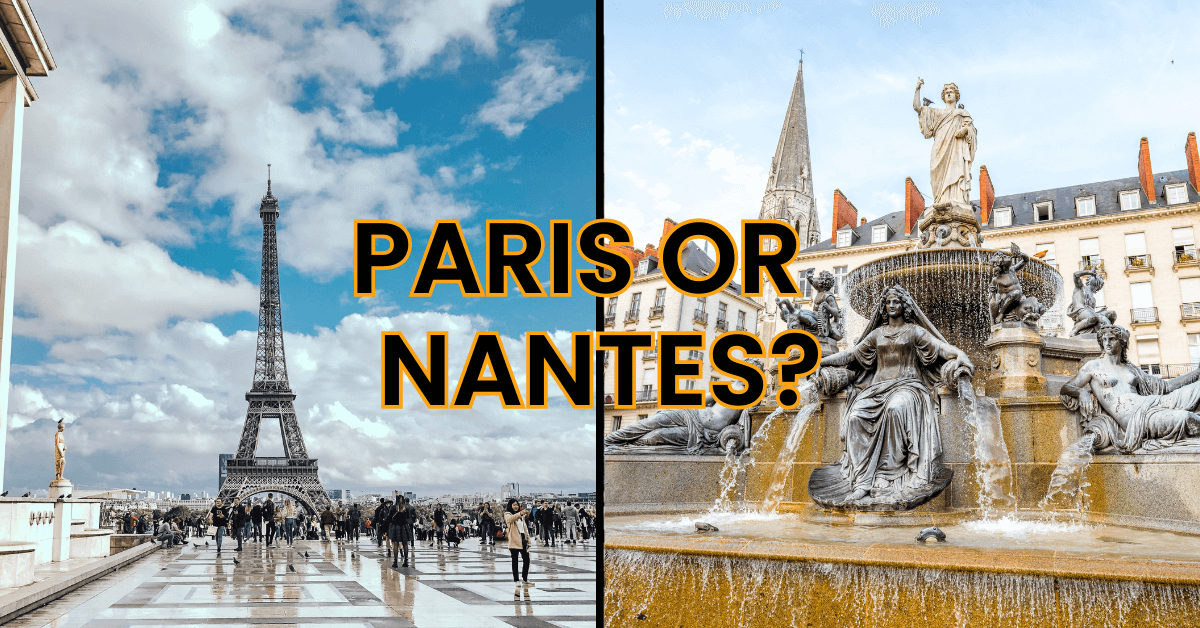Paris or Nantes – Which city should you visit?
Choosing your next French adventure and stuck between Paris or Nantes? Both cities have much to offer, each presenting a unique slice of French culture, history, and lifestyle. Whether it’s Paris, the globally adored capital known for its romance, elegance, and world-class attractions. Or Nantes, the vibrant city on the Loire River known for its creativity, green spaces, and maritime heritage. Your choice will shape the kind of French experience you’ll have. In this blog post, we’ll take a closer look at both cities and help you decide where to set off on your next French journey – Paris or Nantes.
Paris
Paris, it’s so much more than just a city; it’s a world in itself. Imagine this – you’re sitting in a sidewalk café, sipping your coffee as you watch the world stroll by. You can almost hear the Eiffel Tower, the Louvre and Notre Dame whispering stories of love, art, and history.
And trust me, the charm of Paris extends far beyond these famous landmarks. Each neighbourhood, or ‘arrondissement’ as locals call it, is like a mini-city with its own personality. You could be hunting for vintage treasures in the bustling flea markets of Saint-Ouen one moment, and enjoying a peaceful picnic in the quiet parks of Montmartre the next.
Foodies, prepare to fall in love because Paris takes its food very, very seriously. Think fresh baguettes from local ‘boulangeries’, pastries that are too pretty to eat, and restaurants that turn every meal into a feast for the senses.
And let’s not even get started on the art. With a legacy that stretches from Da Vinci to Dali, Paris is a playground for art enthusiasts. Whether it’s classical masterpieces or edgy contemporary works, this city has it all.
Nantes
Nantes, often touted as the most liveable city in Europe, is a delightful fusion of history and innovation, seamlessly intertwining its rich heritage with a progressive mindset. This Atlantic Coast city, once the capital of Brittany, has a vibrant culture marked by the stunning Château des ducs de Bretagne, the whimsical Machines de l’Île, and the lush Jardin des Plantes.
Its dynamic art scene is alive not just in the many museums, but also on the streets with an array of public art. Nantes is also a city of festivals, with music, film, and art celebrations occurring throughout the year. Add to this a blossoming food scene with a fondness for local produce and seafood, and it’s clear why Nantes is a hidden gem just waiting to be discovered.
While we’re comparing Paris and Nantes in this post, we’ve also looked at how Paris stacks up against other cities like Strasbourg and Lille. We’ve linked to those articles below if you want to take a look!
Pros and Cons of Paris and Nantes
Paris Pros:
- 🗼 Iconic Landmarks: Paris is home to world-renowned landmarks like the Eiffel Tower, Notre Dame, and the Louvre, making it a haven for history and art lovers.
- 🥐 Culinary Delights: Paris offers a diverse range of gastronomic experiences, from high-end restaurants to charming street-side cafes.
- 🛍 Fantastic Shopping: For fashion lovers, Paris is a paradise with boutiques from top designers and chic stores around every corner.
- 🏛 Cultural Richness: The city is renowned for its museums, art galleries, and theatrical performances, offering a cultural feast.
Paris Cons:
- 💶 Expensive: Paris is one of the most expensive cities in the world, and the cost of accommodation, dining, and attractions can add up quickly.
- 👫 Crowded: The city can get very crowded, particularly around major landmarks and during peak tourist seasons.
- 💨 Pollution: Paris can suffer from high levels of air pollution, particularly during peak travel seasons. This might affect those with respiratory conditions or people who are sensitive to air quality.
Nantes Pros:
- 🖼 Vibrant Art Scene: Nantes is renowned for its vibrant creative scene, highlighted by unique attractions like the Machines of the Isle of Nantes.
- 🌳 Green Spaces: Nantes has been awarded the Green Capital of Europe in the past, thanks to its numerous parks and commitment to sustainability.
- 🧳 Less Touristy: Nantes offers a more relaxed vibe without the heavy tourist crowds, giving you a more local feel.
- 🌊 Proximity to the Coast: Nantes is close to the western coast of France, allowing for easy trips to charming seaside towns and beaches.
Nantes Cons:
- 🗼 Fewer Iconic Landmarks: Compared to Paris, Nantes doesn’t have as many globally renowned sights.
- ✈️ Accessibility: While Nantes does have an international airport, flight options may not be as plentiful as those to Paris.
- 🏴 Language: With fewer tourists, you may encounter more people who don’t speak English in Nantes compared to Paris.
Which City Has Better Food? Paris or Nantes?
Paris is a culinary heavyweight, known worldwide for its gastronomy. It boasts an impressive number of Michelin-starred restaurants and is famous for its patisseries, boulangeries, and cafés. From croissants and escargot to coq au vin and crème brûlée, food lovers in Paris can enjoy an array of classic French dishes. Street foods like crepes and Jambon-Beurreare also a Parisian staple, allowing for delicious quick bites while exploring the city.
Nantes, on the other hand, presents a vibrant food scene influenced by its proximity to the sea and countryside. Fresh seafood, including oysters and mussels, are prominent in Nantes’ cuisine. It’s also known for its unique regional dishes such as galettes, a type of savoury buckwheat pancake, and Petit Beurre biscuits. Nantes is also a gateway to the vineyards of the Loire Valley, offering fantastic opportunities for wine lovers.
Both cities offer amazing cuisines but in different ways. If you’re after gourmet dining and traditional French cuisine, Paris might take the lead. But if you’re looking for fresh seafood and regional specialities, Nantes could be your foodie paradise.
Which City is Better For Couples? Paris or Nantes?
Both Paris and Nantes offer beautiful settings for a romantic getaway.
Paris, known as the ‘City of Love’, is a favourite among couples. The city’s romantic charm is undeniable with its intimate cafés, romantic landmarks like the Eiffel Tower, and lovely parks where couples can enjoy a leisurely picnic. A boat ride along the Seine or a romantic dinner in Montmartre is perfect for a loved-up couple.
Nantes, though less famous, can be equally romantic. The city’s historic centre is perfect for romantic walks, and its beautiful parks, like Jardin des Plantes, provide a serene setting for couples. Also, the close proximity to the Loire Valley allows for delightful day trips to the countryside or the coast.
In conclusion, Paris might be your choice if you’re looking for a classic romantic experience filled with pictures in front of iconic landmarks. However, if you prefer a less conventional, relaxed, and artsy setting, Nantes could be an excellent choice for a romantic city break.
Which City is Better For Families? Paris or Nantes?
Paris provides a host of attractions for families. Iconic sights such as the Eiffel Tower and Notre Dame can fascinate children and adults alike. Museums like the Louvre offer workshops for children, and the city’s beautiful parks, like the Jardin du Luxembourg, are perfect for a family picnic or a visit to the playground. Last but not least, Disneyland Paris is only a short train ride away, this place is amazing for kids and adults alike!
Nantes also shines as a family destination. The Machines of the Isle of Nantes, with its massive mechanical elephant and fantastical creatures, is a hit with kids of all ages. The city’s many parks and green spaces provide ample room for outdoor play. The Castle of the Dukes of Brittany, with its engaging history, can make for an educational and fun family outing. And the city’s close proximity to the sea means a day at the beach is always an option.
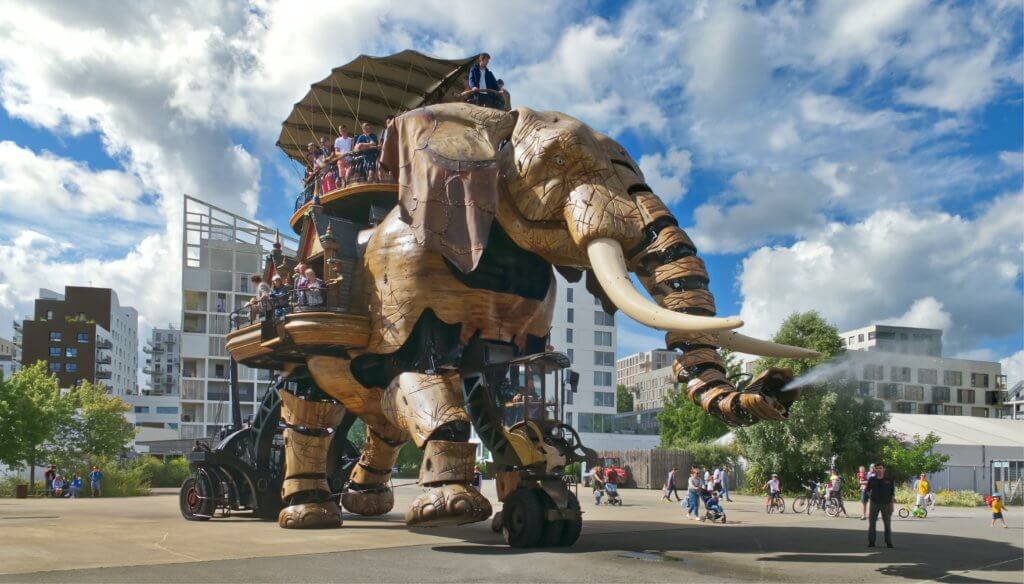
Both cities cater well to families. Paris may offer more famous attractions and museums, while Nantes provides a mix of creative, historical, and outdoor experiences.
Which City is Better For Partying? Paris or Nantes?
If you’re looking to let loose and party, both Paris and Nantes can deliver, but with quite different vibes.
Paris, as a major global city, has an exciting and diverse nightlife scene that caters to almost any taste. You can find everything from swanky rooftop bars with breathtaking views to underground clubs playing the latest electronic music. If you’re into live music, you can catch shows at historic venues like the Olympia. Want to dance until dawn? Clubs like Rex Club and Concrete have got you covered.
Nantes, while smaller, also knows how to party. The city has a vibrant student population, which adds to its lively atmosphere. The nightlife scene here is more laid back but still diverse, with unique bars, live music venues, and clubs. The Hangar à Bananes, a former banana warehouse turned entertainment district along the Loire River, is a hot spot for nightlife with its assortment of bars and clubs.
So, if you’re after a cosmopolitan nightlife experience with a wide variety of options, Paris might be your pick. But if you’re more into a relaxed and fun atmosphere, you might enjoy partying in Nantes more.
Which City is Safer? Paris or Nantes?
Both Paris and Nantes are generally safe for tourists, but like any city, they have their own safety considerations.
Paris, due to its size and status as a top tourist destination, can have issues with petty crime, especially in crowded tourist areas and on public transportation. Pickpocketing and scams can occur, so it’s crucial to stay aware of your surroundings, keep your belongings secure, and be cautious of anyone approaching you with unusual requests.
Nantes, a smaller city with fewer tourists, tends to have lower crime rates. However, as in any city, some areas may be less safe at night, and it’s always advisable to take the usual precautions: avoid poorly lit and deserted areas at night, don’t flash expensive belongings, and stay aware of your surroundings.
France generally has a high standard of public safety, and both cities are safe for travellers who exercise common sense and caution. It’s always a good idea to research and stay updated on areas to avoid and follow any advice or warnings from local authorities.
How long to stay in Paris
Paris is an expansive city, not just in terms of geographical size but also in its cultural, historical, and artistic breadth. It is often said that every street corner in Paris tells a story, every neighbourhood exudes a unique vibe, and every building holds a piece of history. This multitude of offerings can make the city feel vast and overwhelming to the first-time visitor.
If you’re hoping to fully experience the city’s iconic landmarks – from the Eiffel Tower to the Louvre, from the Champs-Élysées to Montmartre – you will need a few days just to scratch the surface. Each of these sights isn’t merely a quick photo opportunity, but rather they each offer a deep dive into the city’s history, architecture, and way of life.
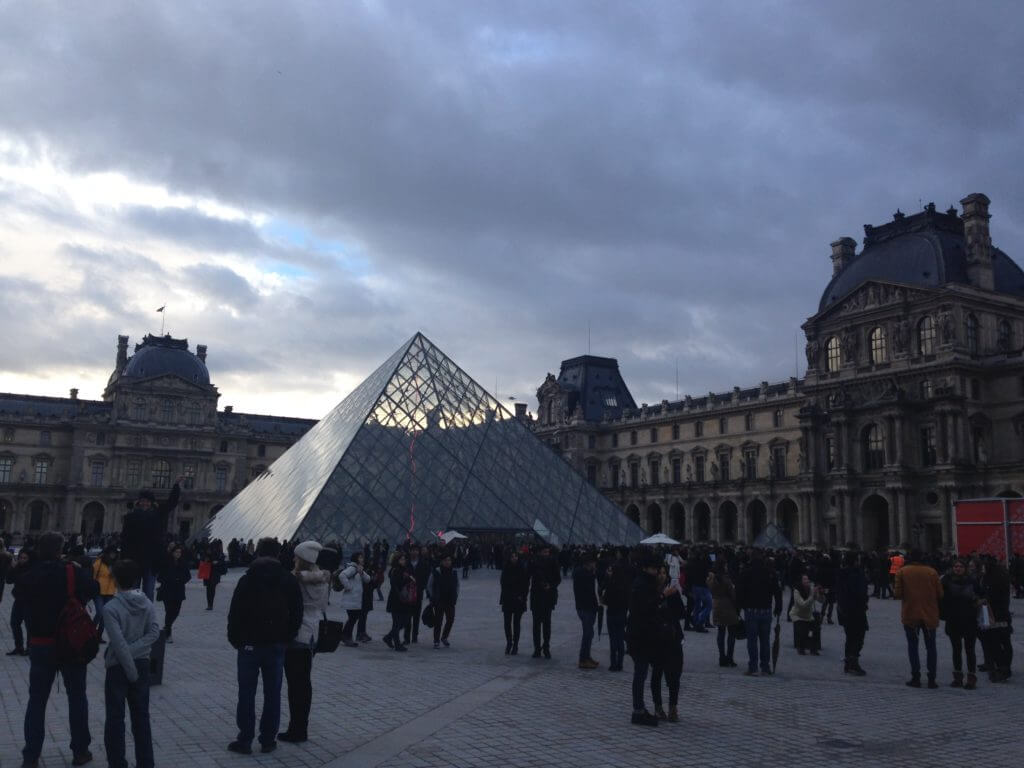
Furthermore, Paris is a city of neighbourhoods, each with its own distinct character. Exploring these diverse areas, such as the bohemian Latin Quarter, the bustling Marais, or the trendy Canal Saint-Martin, can easily fill several days.
And let’s not forget the world-class museums and galleries that dot the city. Art lovers could spend an entire week in Paris and still not see everything the city has to offer in this regard. The Louvre alone, the world’s largest art museum, can take a full day to explore – and that’s if you’re moving quickly.
Paris is also renowned for its culinary scene, and foodies will want to allow plenty of time to explore the city’s bistros, patisseries, markets, and wine bars.
Given all this, a trip of 3 to 5 days allows for a good overview of Paris, but to truly appreciate all that the City of Light has to offer, a stay of a week or longer allows you to explore at a more leisurely pace, delve deeper into the areas that interest you most, and even make a few day trips to the surrounding regions. Remember, Paris is a city that rewards those who take the time to wander its streets and absorb its charm.
How long to stay in Nantes
Deciding how long to stay in Nantes can be a tough call, given the city’s rich history, captivating art scene, and vibrant culture. The duration of your stay primarily depends on your personal interests and how leisurely you wish to explore.
If your goal is to soak up the city’s lively vibe, stroll through the historic city centre, and sample some local gastronomy, a stay of 2 to 3 days should be enough. This gives you sufficient time to wander through the cobbled streets of the Bouffay district, take a relaxing walk along the Erdre River, and indulge in regional cuisine at a traditional French restaurant.
However, if you wish to delve deeper into Nantes’ cultural heritage and history, consider extending your visit to 4 to 5 days. This will allow ample time to discover historical sites like the Château des ducs de Bretagne, appreciate modern art installations of the Voyage à Nantes, and visit the Machines of the Isle of Nantes without feeling pressed for time.
For those seeking a more immersive experience, spending a week in Nantes can be an excellent choice. This period will not only provide time to thoroughly explore the city’s attractions but also leave room for relaxing moments in the beautiful Jardin des Plantes, embarking on day trips to nearby gems like the charming vineyards of the Loire Valley, and truly immersing yourself in the vibrant lifestyle of Nantes.
Which City is More Budget-Friendly? Paris or Nantes?
Both Paris and Nantes offer a range of options for travellers, but in terms of overall costs, Nantes typically comes out as more budget-friendly.
Paris, as one of the world’s most visited cities, can be expensive, especially in terms of accommodation and dining. Popular attractions like the Eiffel Tower and the Louvre charge entry fees. Although the Louvre is free on the first Friday of the month after 6 pm! It is possible to explore Paris on a budget by enjoying the many free or low-cost activities (like exploring the beautiful parks or the banks of the Seine), and dining at local bakeries or markets.
Nantes, on the other hand, is generally less expensive than Paris. Accommodations, meals, and local transportation tend to be more affordable. Many of the city’s attractions, like the Château des ducs de Bretagne, are free to visit. The Machines of the Isle of Nantes, one of the main attractions, does have an admission fee, but it’s reasonable.
So, while both cities can be enjoyed on a range of budgets, Nantes is a more budget-friendly option overall.
How much is food and drink in Paris and Nantes?
| Item | Paris Average Price Range (€) | Nantes Average Price Range (€) |
|---|---|---|
| Beer | €5 – €8 | €5 – €8 |
| Glass of wine | €5 – €15 | €4 – €10 |
| Coffee | €2 – €4 | €2 – €4 |
| Meal at a midrange restaurant | €25 – €50 | €20 – €40 |
How much is it to stay in Paris or Nantes?
| Accommodation Type | Paris Average Price Range (€) | Nantes Average Price Range (€) |
|---|---|---|
| Luxury hotel | €300 – €800 | €150 – €400 |
| Midrange hotel | €100 – €200 | €70 – €150 |
| Budget hotel | €50 – €100 | €40 – €70 |
| Hostel | €20 – €40 | €20 – €40 |
Please note that these are estimated average price ranges and can vary depending on factors such as location, season, and availability.
When is the best time to visit Paris?
Deciding when to visit Paris can make all the difference in your experience, from crowd sizes to weather conditions. Paris enjoys a temperate climate that allows for relatively comfortable conditions throughout the year, though each season offers its own charm.
From March to May, Paris experiences Spring – a season known for its blooming beauty and refreshing temperatures. As trees and flowers throughout the city burst into bloom, the City of Love turns into a picturesque wonderland. This is also a perfect time for open-air picnics in parks like the Champ de Mars or the Tuileries Garden.
June through August mark the summer season in Paris, offering long, sunny days and a lively atmosphere. This is the peak tourist season when you can enjoy alfresco dining, boat cruises on the Seine, and the famous Fête de la Musique, a city-wide celebration of music. Just be prepared for the crowds at major tourist sites!
Autumn graces Paris from September to November with mild weather and beautiful changing foliage in city parks. It’s also a fantastic time to experience the cultural life of Paris, with plenty of exhibitions, concerts, and theatre performances going on. The grape harvest in nearby wine regions, like Champagne and Burgundy, might be of interest to wine lovers!
December through February, winter in Paris is marked by chilly temperatures and festive cheer. Tourist crowds thin out significantly during this time, making it easier to explore the city’s landmarks. Don’t miss out on charming Christmas markets and the city’s grand holiday decorations. If you don’t mind the cold, winter in Paris can be quite magical.
Weather: Paris has a relatively mild climate. Summers can get warm, but not usually excessively hot, while winters are chilly but rarely below freezing. For the most comfortable weather, consider visiting in the shoulder seasons of Spring and early Autumn.
When is the best time to visit Nantes?
Spring: In Nantes, the months of April to June bring mild and comfortable weather, with temperatures ranging from 12-20°C (54-68°F). The city starts to burst into colour with blossoming flowers, making it a lovely time to explore parks like the Jardin des Plantes. Various outdoor events and festivals start taking place, adding a vibrant touch to your visit.
Summer: From July to August, temperatures can reach up to 25°C (77°F), offering perfect weather for enjoying the city’s outdoor attractions like the Île de Versailles. Do note, however, that these are the peak tourist months, so expect a bit more crowd and possibly higher prices.
Autumn: The months of September and October see temperatures around 15-20°C (59-68°F). The city is less crowded during this period, and the fall foliage in parks and along the riverbanks provides a beautiful backdrop for leisurely walks and bike rides.
Winter: From November to March, temperatures in Nantes can drop to around 5-10°C (41-50°F). While it’s not the ideal time for outdoor activities, it’s a good opportunity to explore Nantes’ museums, like the Château des Ducs de Bretagne, and enjoy indoor events and concerts.
Regardless of when you plan to visit, it’s always a good idea to check the weather forecast closer to your travel dates as conditions can sometimes change.”
Average Monthly Temperatures
| Month | Paris High / Low (°C) | Paris Rainy Days | Nantes High / Low (°C) | Nantes Rainy Days |
|---|---|---|---|---|
| January | 8° / 3° | 9 days | 9° / 3° | 12 days |
| February | 9° / 3° | 8 days | 10° / 3° | 10 days |
| March | 13° / 5° | 9 days | 13° / 4° | 9 days |
| April | 17° / 8° | 8 days | 16° / 6° | 8 days |
| May | 20° / 11° | 9 days | 19° / 9° | 9 days |
| June | 24° / 14° | 8 days | 23° / 12° | 7 days |
| July | 26° / 16° | 7 days | 25° / 14° | 6 days |
| August | 25° / 16° | 6 days | 25° / 14° | 6 days |
| September | 22° / 13° | 7 days | 22° / 12° | 7 days |
| October | 17° / 10° | 8 days | 17° / 9° | 10 days |
| November | 11° / 6° | 9 days | 13° / 5° | 11 days |
| December | 8° / 4° | 9 days | 10° / 3° | 12 days |
Please note that the temperatures are in Celsius and the number of rainy days represents the average for each month.
Getting around Paris:
Paris boasts an extensive public transportation network that includes the Métro (subway), buses, trams, and a bike-sharing service called Vélib’. The Métro is particularly convenient as it connects all major tourist attractions and extends well into the suburbs. It’s fast, efficient, and a great way to avoid the city’s notorious traffic congestion.
The buses and trams are also reliable options to get around Paris, offering the added benefit of sightseeing as you travel. The tickets you purchase are valid across buses, trams, and the Métro for a certain period of time, typically an hour and a half. This means you could take a bus and a metro ride on a single ticket as long as your journey falls within the valid period.
For those looking to add a bit of exercise to their exploration, the Vélib’ bike-sharing scheme is a fun option. Paris is becoming increasingly bike-friendly, with many dedicated cycle lanes across the city.
Walking is also a fantastic way to explore Paris. Many of the city’s iconic landmarks are conveniently close together, and strolling along the Seine River or through charming neighbourhoods like Montmartre and Le Marais is a pleasure in itself.
Taxis and ride-sharing services like Uber are also widely available throughout Paris. However, in high-traffic areas and pedestrian-only zones, they might not be the most efficient choice. Do keep in mind that Parisian traffic can be heavy, particularly during rush hour.
Getting around Nantes:
Nantes boasts an efficient and user-friendly public transportation system, which includes trams, buses, and a bike-sharing scheme called Bicloo. The tram network in Nantes is one of the most extensive in France, with three lines covering many key attractions in the city. Your tram ticket will also allow you to hop on and off buses within a set period, typically an hour, which makes getting around the city a breeze.
For those who prefer a more active mode of transport, the Bicloo bike-sharing scheme offers an excellent option. Nantes is known for being a bicycle-friendly city with numerous dedicated cycle lanes and routes, making it easy and safe to navigate.
Walking is another great way to explore Nantes, especially in the compact city centre where many of the key sites are located. Plus, you’ll get to enjoy the city’s beautiful architecture and vibrant street life up close.
Taxis and Ubers are readily available in Nantes. However, be aware that in the pedestrianized zones of the city centre, you may need to walk a short distance to catch a ride.
Top things to do in Paris
- Eiffel Tower: No trip to Paris is complete without a visit to this iconic landmark. For an unforgettable experience, take the elevator up to the viewing deck for panoramic views of the city, or enjoy a picnic in the park below.
- Louvre Museum: Home to the Mona Lisa and countless other art treasures, the Louvre is one of the world’s most famous museums. Be sure to explore its grand architecture, including the striking glass pyramid at the entrance.
- Montmartre: This historic and artistic neighbourhood is a must-visit. Climb the steps to the stunning Sacré-Cœur Basilica for a fantastic view of Paris, and wander the cobblestone streets to discover charming cafés, boutiques, and the bustling Place du Tertre, where artists sell their work.
- Champs-Élysées and Arc de Triomphe: Stroll down the world’s most famous avenue, lined with shops, theatres, and cafés. At the end, you’ll find the Arc de Triomphe, another iconic Parisian monument, offering beautiful city views from its top.
- Notre Dame Cathedral: Although currently under reconstruction after the fire in 2019, Notre Dame’s grandeur can still be admired from the outside. It’s also a great starting point for a leisurely walk along the banks of the Seine River, which are lined with bookstalls, artists, and charming views.
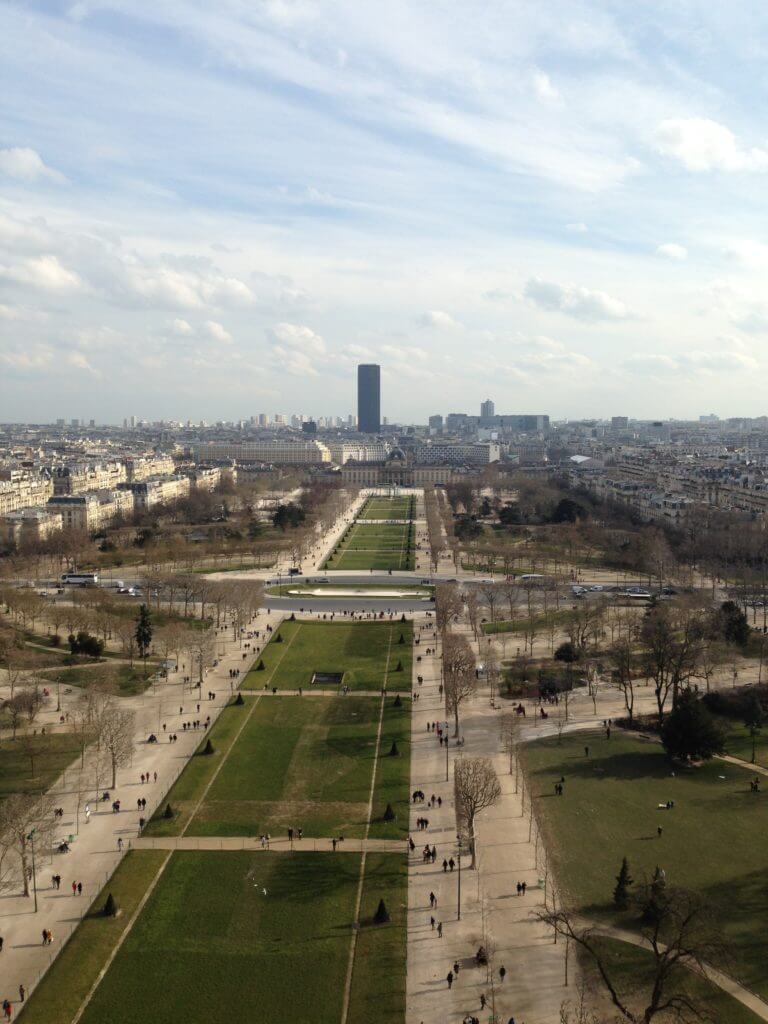
Top things to do in Nantes
- Château des Ducs de Bretagne: A must-visit landmark in Nantes, this impressive castle is home to the Nantes History Museum. With its beautiful architecture and fascinating exhibits, it offers an insightful look into the city’s past.
- Les Machines de l’île: This unique artistic project is one of the city’s major attractions. Here, you can see gigantic mechanical animals, including the famous Grand Elephant. It’s an unforgettable experience for both kids and adults.
- Passage Pommeraye: An architectural masterpiece, this three-level shopping arcade dating from the 19th century is a great place to shop or simply admire its artistic beauty.
- Jardin des Plantes: This stunning botanical garden is the perfect spot to enjoy a relaxing stroll. It’s home to a variety of exotic plants, beautiful greenhouses, and even a few art installations.
- The Island of Nantes: This creative district located on a former shipyard site is a hub of culture and innovation. It’s home to various creative projects and installations, making it a must-visit for any art and culture lover.
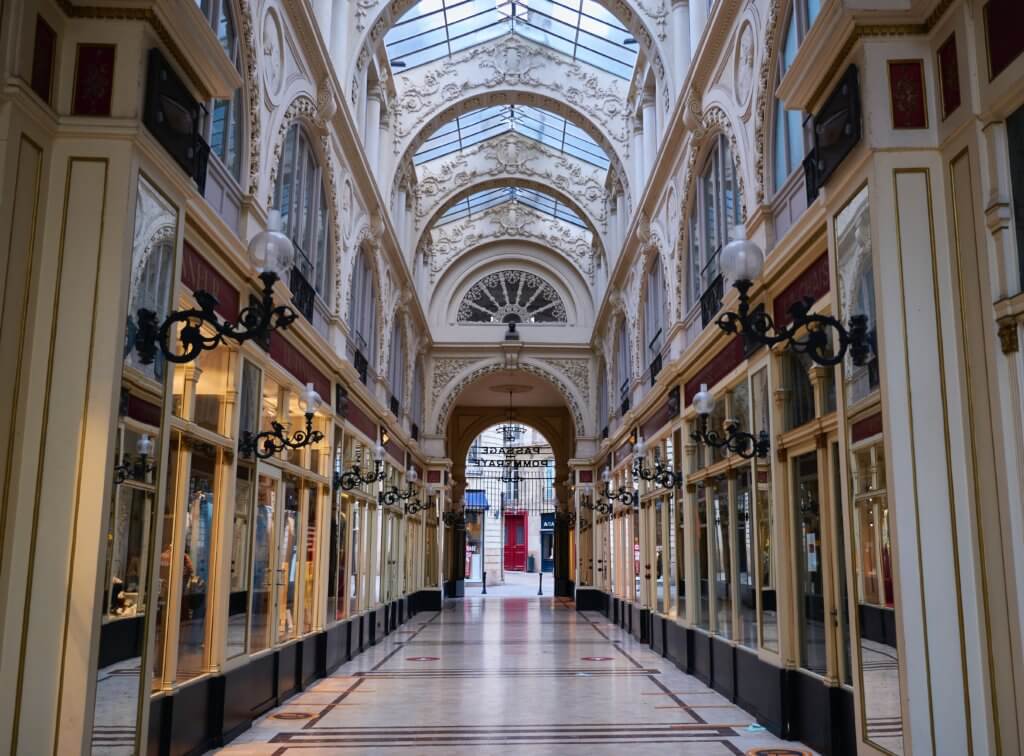
How to spend three days in Paris
Day 1: The Heart of Paris
Begin your Paris adventure in the heart of the city. Start your morning with a visit to the iconic Eiffel Tower. Take the elevator up for an amazing view of the city, or simply admire it from the ground. From there, make your way to the Musée d’Orsay, which boasts an extensive collection of Impressionist masterpieces. After lunch, head to the Notre Dame Cathedral. Even though it’s currently under reconstruction, its facade is still worth seeing. Walk along the banks of the Seine River to the famous Louvre Museum, and spend the rest of your afternoon exploring its vast collections. Finish your day with a delicious dinner in the Latin Quarter, a vibrant area known for its bustling bistros and cafés.
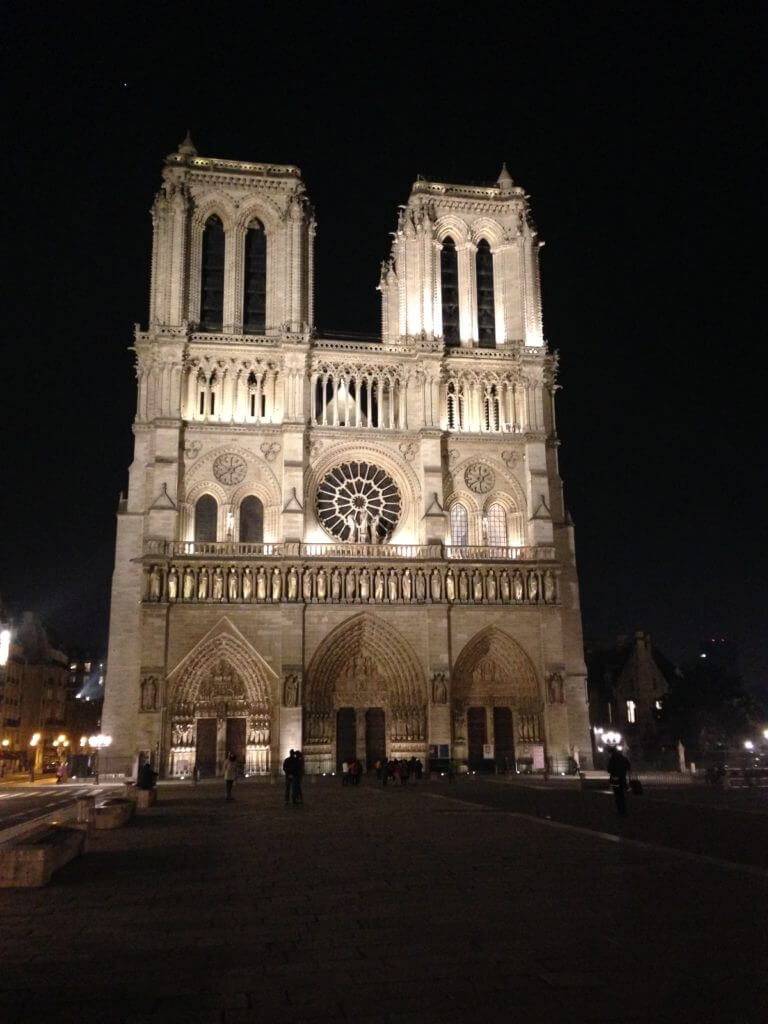
Day 2: Arts and Bohemian Flair
Start your second day in Montmartre, the historic arts district known for its bohemian past. Visit the Sacré-Cœur Basilica and enjoy a panoramic view of Paris from its steps. Explore the area’s charming streets, and check out the Place du Tertre, where local artists sell their work. For lunch, grab a crepe from one of the street vendors. In the afternoon, head to the Centre Pompidou, a modern art museum with a unique architectural design. End your day in the Marais district, where you can enjoy dinner and explore the area’s diverse boutiques and galleries.
Day 3: Chic and Glamour
Begin your final day on the famous Champs-Élysées. Start at the Place de la Concorde and make your way up the avenue, window shopping and enjoy a coffee at a streetside café. At the end, you’ll find the impressive Arc de Triomphe. Afterwards, take a metro to the stylish Saint-Germain-des-Prés district, where you can enjoy a relaxed lunch and explore its chic boutiques. Spend your afternoon at the Musée Rodin to admire the sculptor’s masterpieces, including The Thinker. As the sun begins to set, take a scenic cruise on the Seine River, a perfect and romantic end to your three days in Paris. Enjoy your final dinner at one of the cosy bistros along the river.
How to spend three days in Nantes
Day 1: Exploring the Heart of Nantes
Begin your Nantes adventure in the city centre. Visit the Château des Ducs de Bretagne, home to the Nantes History Museum. Enjoy exploring the medieval fortress and its surrounding gardens. Afterwards, head to the Gothic-style Nantes Cathedral nearby. For lunch, find a local restaurant to sample some regional cuisine.
In the afternoon, enjoy a leisurely stroll along the scenic Loire River. Then, head to the Passage Pommeraye, an elegant shopping arcade from the 19th century. Round off your day with a delicious dinner at one of the city’s gourmet restaurants.
Day 2: Delving into Art and Innovation
Start your second day at Les Machines de l’île, a unique attraction inspired by the works of Jules Verne. Here, you can ride the gigantic Grand Elephant or the Marine Worlds Carousel. Post lunch, explore the creative district on the Island of Nantes, which is home to various artistic projects and installations.
In the evening, take a walk around the Trentemoult district, a former fishing village known for its colourful houses. Enjoy dinner at a riverside restaurant with views of the Loire River.
Day 3: Enjoying Nature and Leisure
Dedicate your last day to Nantes’ beautiful green spaces. Begin with a visit to the Jardin des Plantes, a stunning botanical garden. After a picnic lunch in the park, take a short boat ride to the quaint village of Trentemoult.
In the afternoon, explore the unique vineyards of the Nantes Wine Region or consider a short trip to the Atlantic coast, just a stone’s throw away from the city. End your trip with a farewell dinner in Nantes, reminiscing over your favourite moments from the trip.
Gareth is an avid city adventurer with a particular passion for finding amazing food! There’s quite literally nothing he doesn’t like. He spends most of his travelling time trying to find great restaurants and cafes to eat at. Alongside trying local street food which he loves! He’s done most of his travelling in Europe so far but would love to visit Japan and Mexico
When not travelling you can find Gareth boxing, running, or in the gym. He’s got a passion for exercise and loves physical challenges.
You can contact him at gareth@thecityadventurers.com

